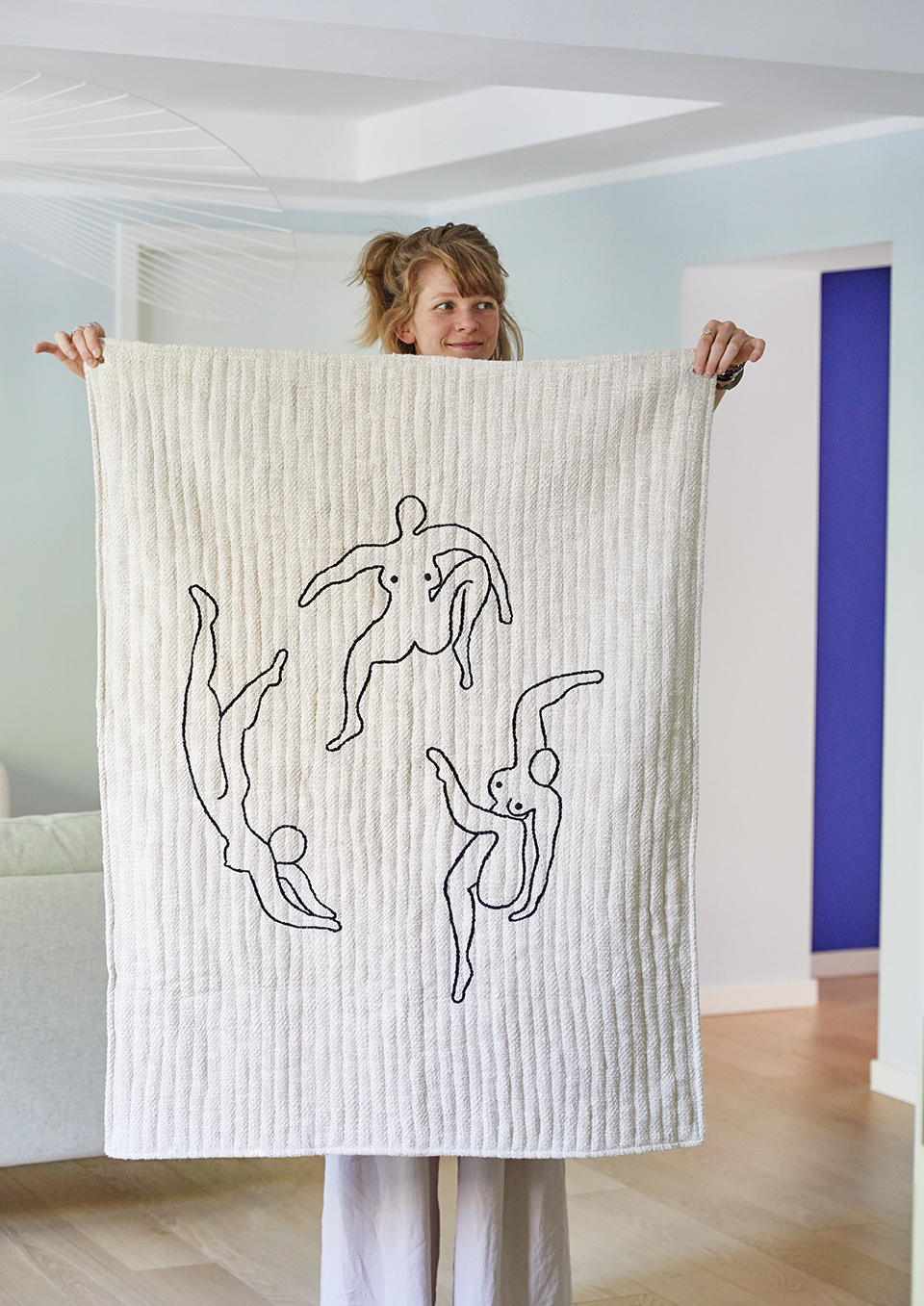Our embroidery of naked people in the series NAKED DANCE is inspired by paintings of the artist Henri Matisse.
Which is why, in this blog entry we would like to tell you about the most interesting life of Henri Matisse. An artist whose work impresses us very much.
Who was Henri Matisse?
Henri Matisse rose in the 1920s next to Pablo Picasso to the most important living artists in France and is remains until this day as one of the most important painters of the first half of the 20th century. The painter and sculptor founded Fauvism and thus laid the foundation for Expressionism.
A life as a painter due to appendicitis
Originally, Matisse was supposed to follow in his family’s footsteps and become a seed salesman. However, because he was in poor health, he found it difficult to carry heavy loads and it became impossible for him to take over the family business. He then began to study law in order to become a civil servant. At the age of 20, he had to spend many weeks in bed because of appendicitis. Although he had not been interested in art until then, he asked his parents for a box of paint to pass the time. Matisse himself tells about this event: “From the moment I held the paint box in my hands, I knew that this would be my life.”
Fauvism
In 1905 Matisse exhibited his paintings along with the artists Marquet, Vlaminck, Derain and van Dongen at the Salon d’Automne in Paris. The exhibition was met with great indignation. Both the public and art critics were shocked by the strong, unnatural colours and reacted violently. The pure, bright and dominant colours applied in thick layers to the canvases were a scandal. The art critic Louis Vauxcelles compared the room in which the works were exhibited to a “cage with wild animals”. Inspired by this choice of words, the painters themselves gave their artistic movement the name Fauvism; fauv is the French word for wild. A new style was born. Henri Matisse soon became the leader of the group thanks to his ”Woman with a hat”, which was considered outrageous at the time.

Fauvism quickly won its place as one of the first movements of the 20th century avant-garde and moved art a decisive step towards abstraction. This pioneering movement of modernism bid farewell to the immobility of the subject. Colour became dynamic and brushwork sweeping.
No provocation, but joie de vivre
Matisse’s works are free of depictions of political and social events. Instead of thematising conflicts of modern life (as many of his contemporaries did), he painted pictures that radiate joy: beautiful landscapes, flowers, oriental interiors with an atmospheric ambience. Beauty, order, luxury, tranquillity, joy and pleasure are the recurring impressions of his works. Matisse wants to give the viewer recreation with his pictures. Other recurring themes in his paintings are women, music and dance.

Henri Matisse, La joie de vivre, 1905
Matisse had a very successful artistic life. He travelled to other countries, met with important painters of his time and opened his own academy of painting for a few years. After World War I, Matisse was considered an internationally recognised artist.
When he fell ill with stomach cancer at the beginning of the 1940s, his artistic style suddenly changed drastically: he could not paint as before and needed a lot of support after the severe surgery. As he could now no longer stand for long to paint, he began to work with silhouette and collage technique as an alternative to painting.


On November 3 1954 Henri Matisse died at the age of 85 years in his apartment in Cimiez.
Henri Matisse’s Dance
Dance is one of Henri Matisse’s most famous works. It is an ode to life, joy and physical abandon and became a symbol of modern art. The artwork, along with its partner painting Music, was commissioned in 1909 by the influential Russian collector Sergei Shckukin for the decoration of his estate. This portrait of a debauched party, characterised by its simplicity and energy, left a lasting impression on 20th-century art. Painted at the height of the Fauvist aesthetic, Dance embodies emancipation from the traditional representational conventions of Western art. Today, Dance hangs together with its partner painting called Music in the Hermitage in St. Petersburg.

The energy and simplicity of this artwork as well as dancing itself inspired us to create our series NAKED DANCE. You can never have enough lightness and joy in your life! We should all celebrate the good things once more in the spirit of the ode to life.
